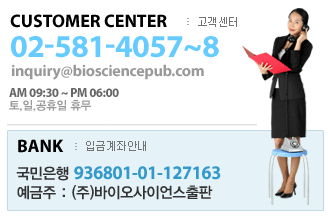Description
Build a solid knowledge base in hemodynamic nursing skills, with the newly updated Hemodynamic Monitoring Made Incredibly Visual!®, 4th Edition.
Full of colorful images that illustrate monitoring concepts and processes, this concise, enjoyable guide sorts through the complexities of hemodynamics and clarifies them in easy-to-follow ways. Grasp the structures and functions of pulmonary and cardiac systems and the vital skills of hemodynamics, with this vital reference—a must-have for all nursing students, new nurses, and nurses returning to critical care.
Get clear, concise direction on the concepts, devices, and nursing skills used in hemodynamic monitoring:
- NEW and updated content, photos and graphics that demonstrate nursing skills and responsibilities
- Hundreds of colorful images that guide you through the ins and outs of hemodynamics – detailed photos, diagrams, charts and other visual aids that clarify cardiopulmonary anatomy and physiology
- Illustrates vital practice issues, such as how to confirm the lungs are getting enough oxygen, and how well the heart is pumping — explains and reinforces key concepts in easy-to-remember ways
- Explains the fundamentals and current best practices in hemodynamic monitoring in easy-to-retain terms
- Ideal for visual learners –images demonstrate step-by-step, expert guidance on monitoring skills, physiology and devices:
- Understanding cardiopulmonary anatomy and physiology
- Understanding a pressure monitoring system
- Vascular access
- Pressure monitoring – arterial, central venous, and pulmonary artery pressure monitoring
- Cardiac output monitoring
- Tissue oxygenation monitoring
- Minimally invasive hemodynamic monitoring
- Circulatory assist devices
- Step-by-step guidance on thermodilution methods, analyzing thermodilution curves, measuring cardiac function and output, maintaining artery catheters, and more
- Ideal on-the-spot reference and review for nursing students and new nurses – addresses the physiology behind each learning objective and provides vital nursing considerations
- Chapter features:
- On the level – defines normal and abnormal pressure readings for different patient conditions
- Q&A – illustrated riddles, diagrams, and questions and answers at the end of each chapter that help you fully integrate new knowledge
- Matchmaker – matching terms and conditions to their correct definition
- Memory board – learning aids and memory cues that help you retain important definitions and processes
- Ride the wave – explains the actions of waveforms, including how to recognize abnormal waveforms
- “Nurse Joy and Jake” – expert insights and encouraging advice
About the Clinical Editor
Rose Knapp, DNP, RN, APN-BC, is an Acute Care Nurse Practitioner, and Associate Graduate Faculty and MSN Program Director/APN Program Coordinator at the Marjorie K. Unterberg School of Nursing and Health Studies at Monmouth University in West Long Branch, New Jersey
Table of contents
1. Cardiopulmonary anatomy and physiology
2. Understanding a pressure monitoring system
3. Vascular access
4. Arterial pressure monitoring
5. Central venous pressure monitoring
6. Pulmonary artery pressure monitoring
7. Cardiac output monitoring
8. Tissue oxygenation monitoring
9. Minimally invasive hemodynamic monitoring
10. Circulatory assist devices
Index
{교재 사용시 강의 자료 문의 바랍니다.}
상품정보고시
| 제품명 |
Hemodynamic Monitoring Made Incredibly Visual (Incredibly Easy! Series®) Fourth Edition |
| 판매가격 |
49,000원 |
| 제조사 |
Wolters Kluwer |
결제후 2~5일 이내에 상품을 받아 보실 수 있습니다.
국내 최대의 물류사 CJ택배를 통하여 신속하고 안전하게 배송됩니다.
3만원 이상 구입시 무료배송입니다.
(제주도를 포함한 도서,산간지역은 항공료 또는 도선료가 추가됩니다.)
결제방법은 신용카드, 국민/BC(ISP), 무통장입금, 적립금이 있습니다.
정상적이지 못한 결제로 인한 주문으로 판단될 때는 임의로 배송이 보류되거나,주문이 취소될 수 있습니다.




